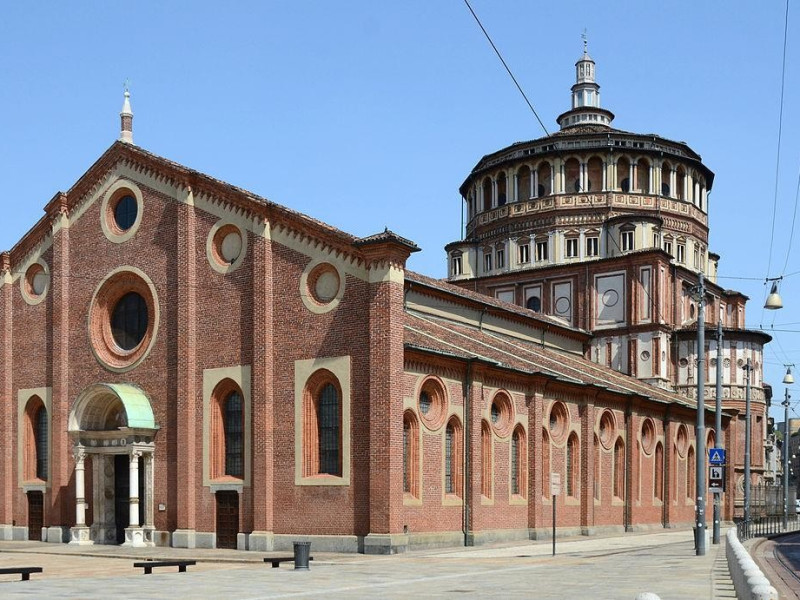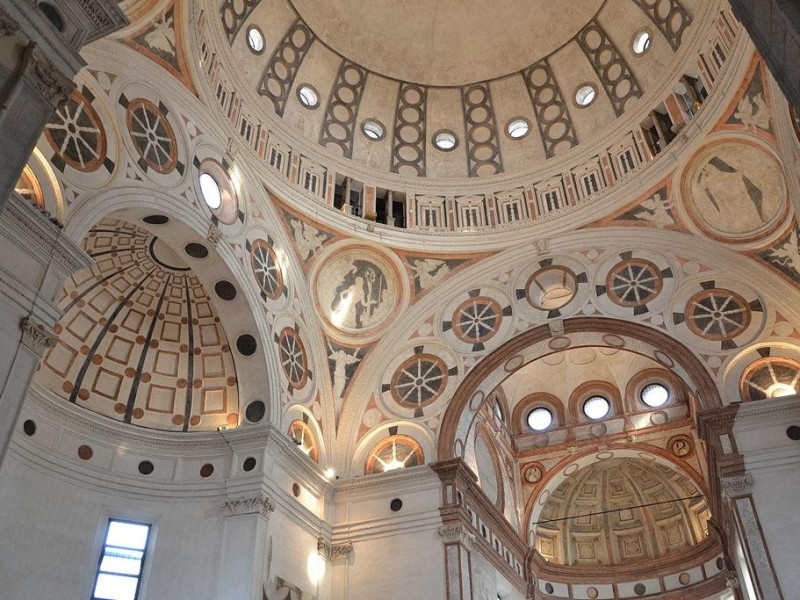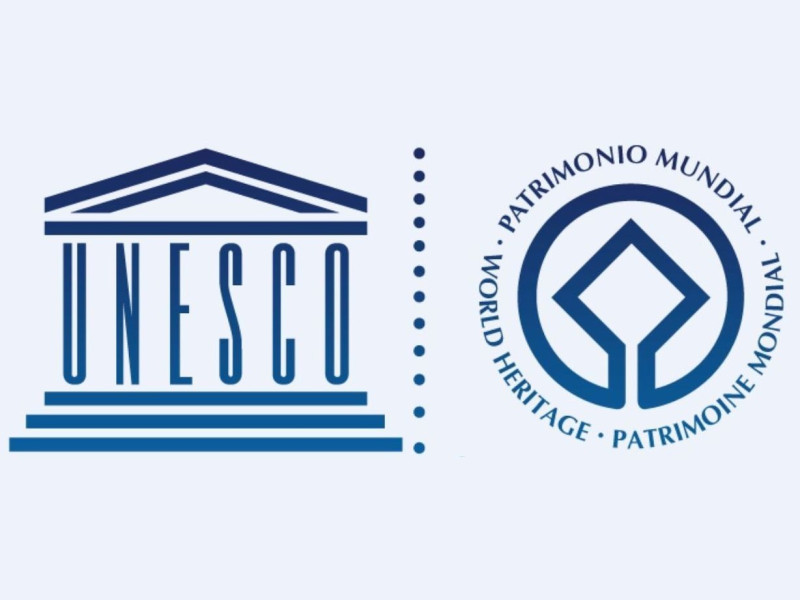Basilica di Santa Maria delle Grazie - Cenacolo Vinciano (Sito UNESCO)
It's a Shrine belonging to the Dominican Order. Built between 1492 and 1493 by Duke Ludovico il Moro as a family mausoleum (following the untimely death of his wife, Beatrice d'Este), is one of the most representative buildings of worship of the Renaissance, second Italian site classified by UNESCO as "World Heritage". The design of the Dominican complex is attributed to Guiniforte Solari, former chief engineer of the construction of the Duomo. It was based on three cloisters: north, the side of the church, and on the other three a portico of columns with Gothic capitals. On the north side of the porch are the ancient Chapel of Grace, the halls of the Chapter, Locutorio and the library; on the south, the refectory, which houses the famous "Last Supper", the masterpiece by Leonardo da Vinci (1494-1498), located on one of the side walls of the environment: oil tempera on plaster, it's inspired by the Gospel of John in which Jesus announces the betrayal of one of the apostles (a different reading of the painting is proposed by the popular novel "The Da Vinci Code", Dan Brown). The Church regards the northern Gothic tradition: three aisles wide and short, with pointed arch vaults and the facade "hut". The materials are traditional (brick and granite). The aisles are covered by cross vaults with crease lines from capitals leaves. The central portal, in white marble with entablature decorated with round and profiles of figures, is the first intervention wanted by Ludovico il Moro. The grandstand, traditionally attributed to Bramante, is a massive cube holding a hemispherical dome jointed by plumes representing the four Doctors of the Church. The complex includes the Cloister of the Frogs (or "Little Cloister") and the Old Sacristy. In the years of Spanish rule, it became the seat of the Inquisition.







